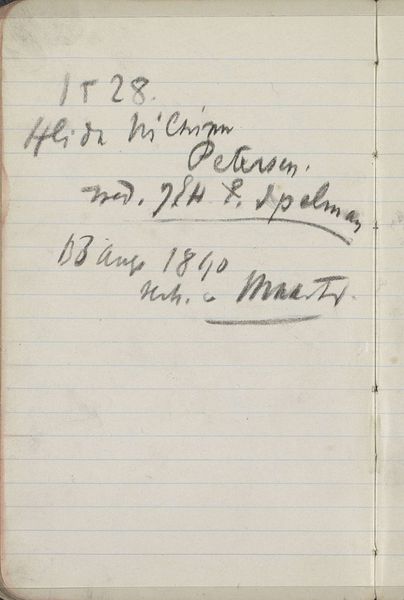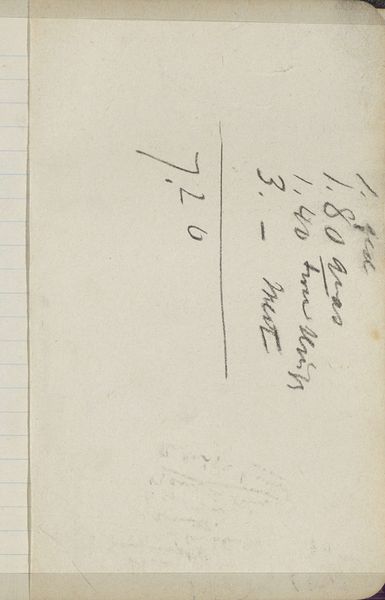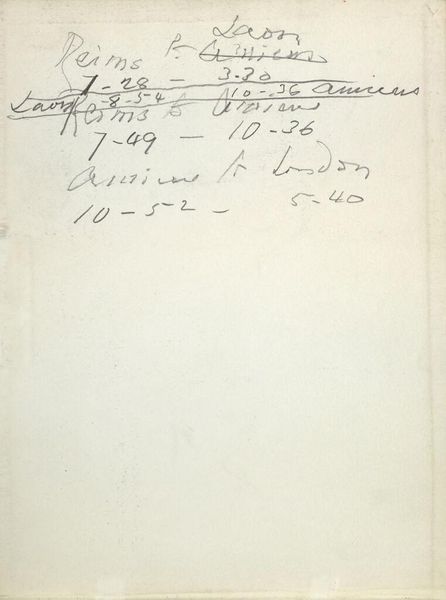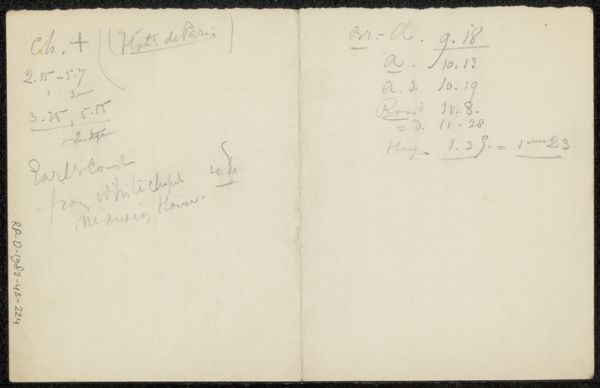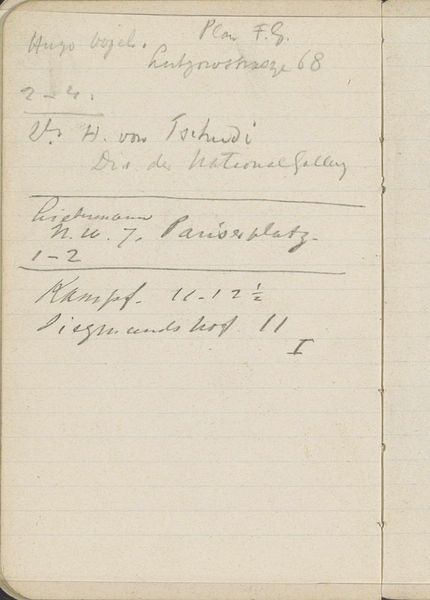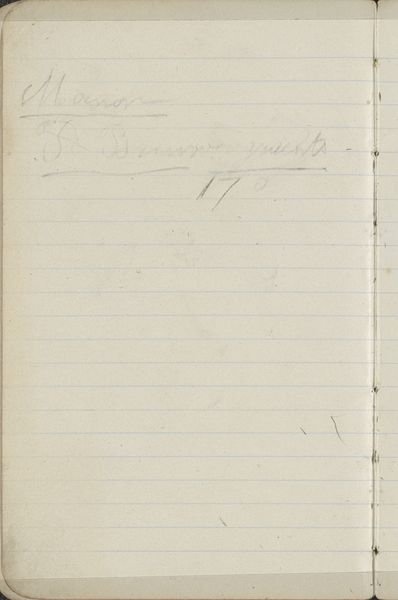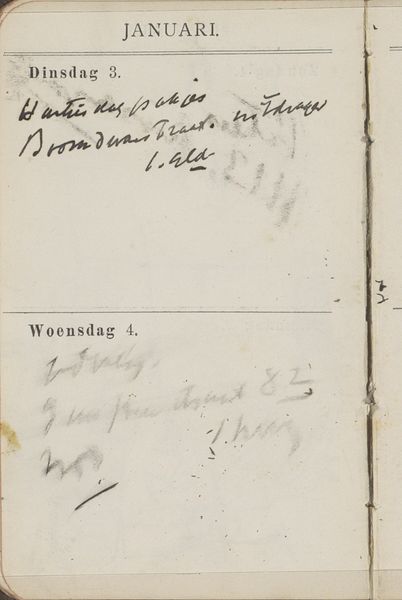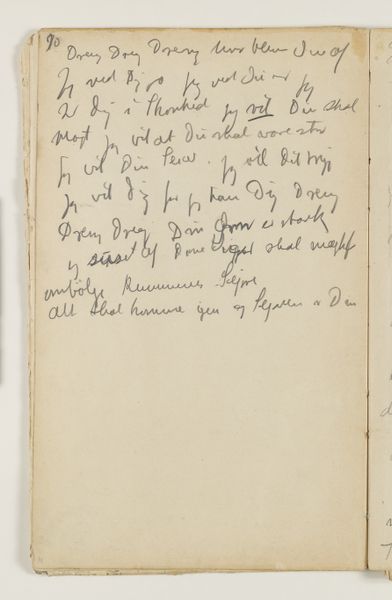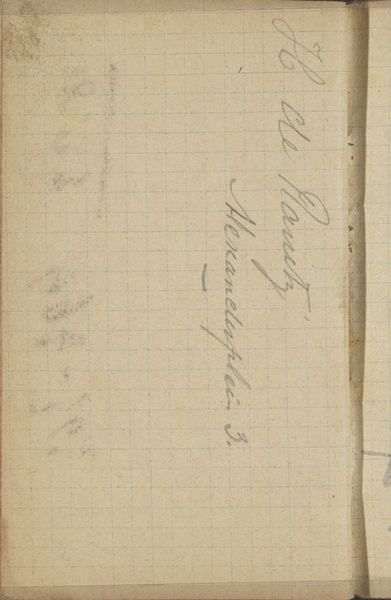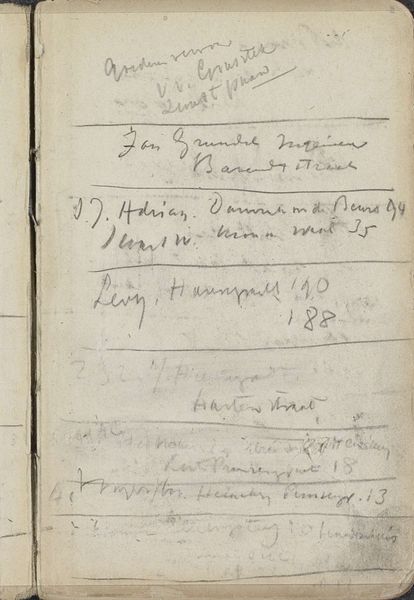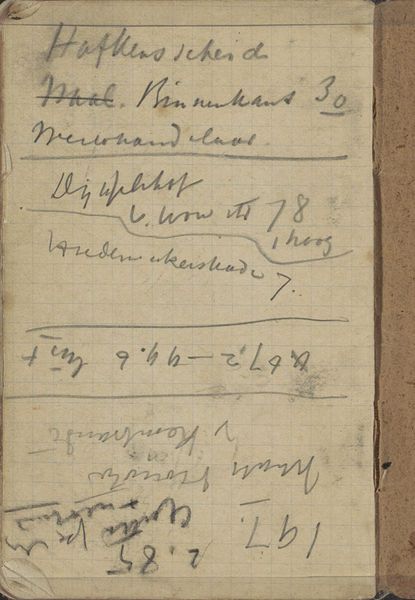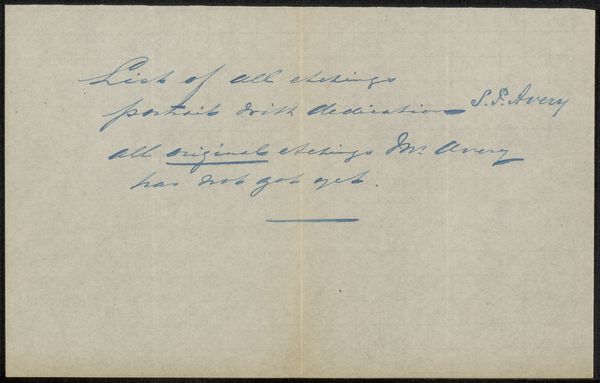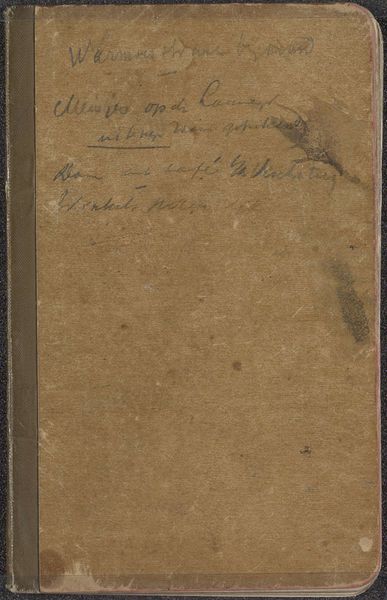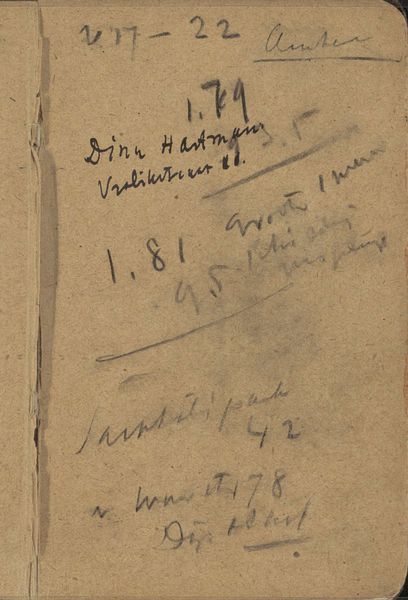
Copyright: Rijks Museum: Open Domain
Editor: So, here we have Isaac Israels' "Annotaties," which translates to annotations. It's a drawing in ink on paper, placing its creation sometime between 1875 and 1934. It gives off a feeling of…ephemerality, doesn't it? Almost like catching a glimpse of a forgotten thought. What do you see in this piece? Curator: I see layers, not just of ink, but of time and intention. It resembles a page torn from a merchant’s ledger, but its symbolic weight lies in how casually, yet deliberately, these words were captured. The ink itself speaks of impermanence, a contrast to the enduring nature of art. Doesn't it feel like a preservation of fleeting, perhaps even mundane, moments? Editor: Definitely! The word "Singapore" jumps out – does that hold any particular significance? Curator: Absolutely. "Singapore" as a geographical signifier pulls in threads of trade, colonialism, and the artist's personal experience, perhaps a memory, a connection, or simply a financial transaction, imbued with exoticism. And these numerical notations... how do they resonate with you? Do they feel purely practical or is there something more? Editor: I initially thought of it as just bookkeeping. But the way "100" is written... and crossed out… adds a human element. It's like seeing the artist’s hand making decisions, changing his mind. Curator: Precisely! We see more than ink; we see decisions, revisions. It brings to mind palimpsests, where older writings exist beneath newer ones. Each mark contains a record, creating layers of meaning and perhaps a story that refuses to be fully uncovered. Editor: I never considered it that way. Now I see that "Annotaties" captures not just a transaction but a moment of thought, of presence. Thanks! Curator: My pleasure. It is amazing how simple notes, become powerful relics with historical, economic, and emotional value.
Comments
No comments
Be the first to comment and join the conversation on the ultimate creative platform.
